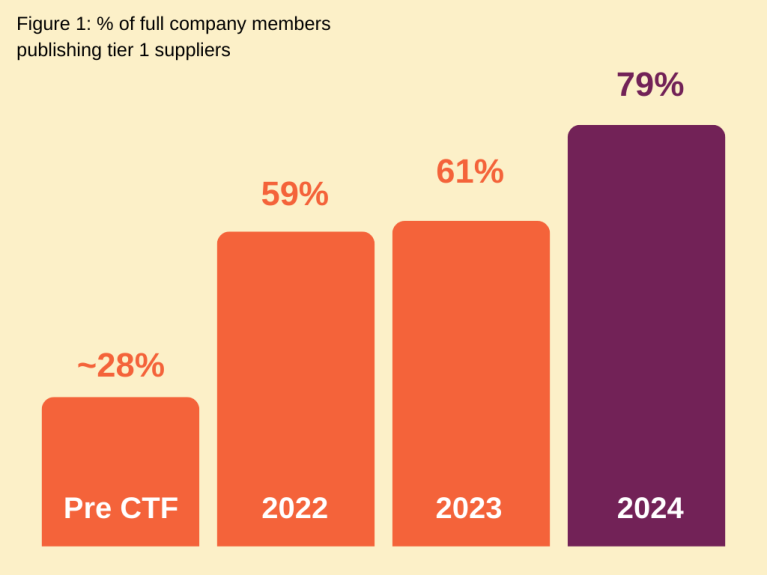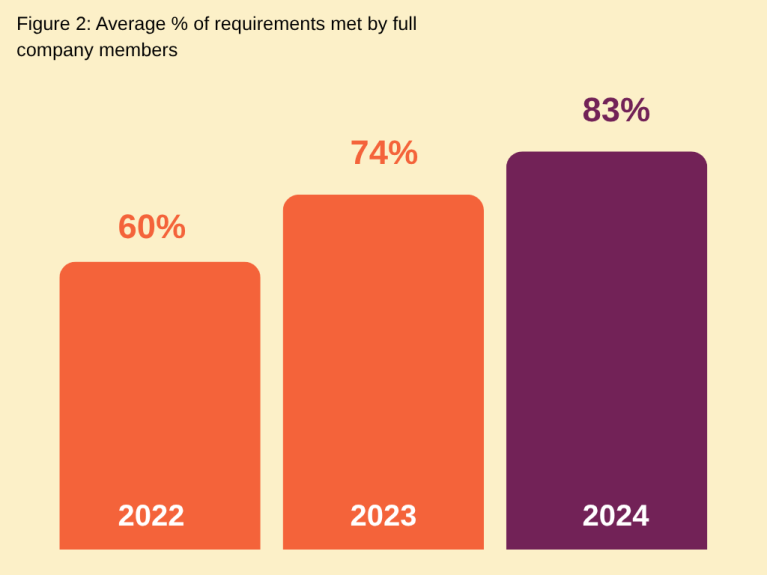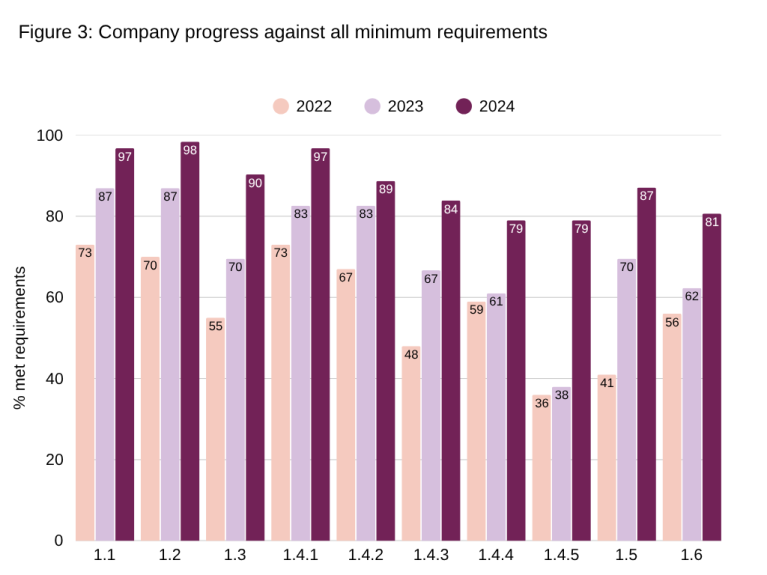
Today, the Ethical Trading Initiative (ETI) takes a significant step forward in its transparency journey by publicly sharing how our company members are performing against the Corporate Transparency Framework (CTF).
Why does this matter? Because when companies are asked to report publicly on their human rights due diligence, the result is not just better reporting, but heightened attention and resources, leading to real improvements for supply chain workers.
What is the Corporate Transparency Framework?
Launched in 2021, the CTF sets out minimum public reporting requirements for ETI company members. Since 2022, full members have submitted annual evidence against these requirements. ETI reviews each submission, shares detailed feedback, and supports members to continually improve.
The framework covers key areas of human rights due diligence such as:
- Human rights risk identification
- Supply chain disclosure (including tier one suppliers)
- Respect for trade union rights
- Governance and accountability on labour rights
You can explore the full list of CTF minimum requirements here.
Why supply chain transparency matters
In 2024, ETI took an additional step by mandating all full members publish their tier one supplier data on Open Supply Hub (OS Hub), a global open-source platform to improve supply chain transparency and drive progress on human rights.
The result?
- 35% of full members published tier one supplier data on OS Hub for the first time in 2024
- By 2025, 79% of full company members were publishing on OS Hub.
This shift is already having an impact - making supplier data more accessible for civil society, workers’ organisations, and other stakeholders, and enabling collective action on shared risks.

Making company member performance public
For the first time, we are publishing company performance against the CTF on our website.
Why?
Accountability: By sharing this information in the public domain, we aim to strengthen company member accountability and drive continuous progress.
Collaboration: Public disclosure enables peers, NGOs and trade unions to identify leaders, gaps and opportunities for collaboration.
Learning: In publishing member performance year on year, we aim to help track progress, share good practice and inform support.
What the data shows
ETI company members are making meaningful strides. Progress has been made year on year with an increasing number of members meeting the minimum requirements and disclosing their first tier supply chains. Since reporting began, company members met: 60% of total minimum requirements in 2022, 74% in 2023, and 83% in 2024.

Not only has it improved the level of transparency, members’ are now demonstrating better understanding of human rights due diligence including:
- Understanding of what a salient risk is
- How to effectively identify and prioritise risk
- How to set out their approach to respecting freedom of association and collective bargaining
- How to mitigate risks in supply chains
We have seen progress from ETI company members against all the CTF minimum requirements over the last three years. ETI introduced a new minimum requirement in 2024, asking company members to publish their tier one supply chains on OS Hub - you can see this new requirement in the graph below under 1.4.5. Overall, we have seen an average improvement rate of 28% across all the minimum requirements since reporting began in 2022.
[Requirement 1.4.5 was introduced in 2024 - while data was collected in 2022 and 2023 publication of tier one supply chains on OS Hub was not required or assessed by ETI until 2024.]
What’s next?
This is just the beginning.
As ETI develops its 2030 strategy, we’ll continue to strengthen our focus on transparency - supporting company members to conduct and report on meaningful human rights due diligence, in alignment with their responsibilities under the UN Guiding Principles and new legislation, and most importantly drive real change for workers.
Transparency isn’t a tick-box - it’s a tool for transformation. And we’re proud to be making member performance in this area public.
Take a look, below.

